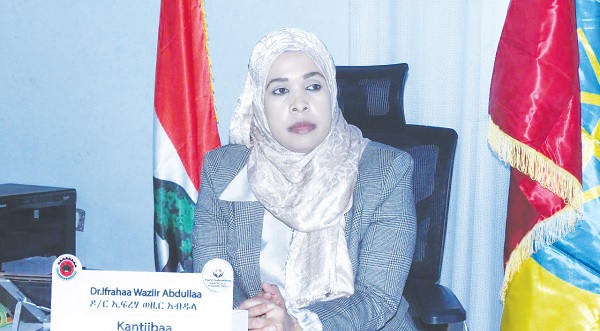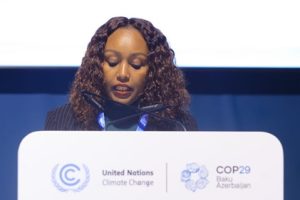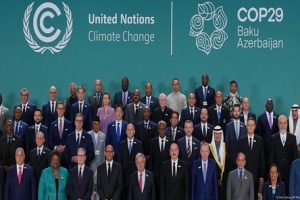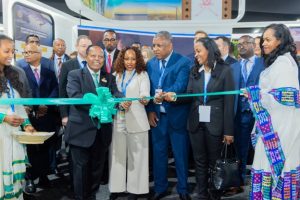
The Ethiopian Green Legacy Initiatives is a countrywide reforestation movement launched by the Ethiopian government in 2019. The initiative’s primary goal is to combat deforestation, land degradation, and climate change by planting billions of trees across the country. The initiative was implemented from 2019 to 2022.
The initiative aims to plant 4 billion trees in the rainy season each year. Besides, this program aims to restore Ethiopia’s degraded landscapes, create jobs, improve biodiversity, and mitigate the impacts of climate change.
The initiative has been divided into two phases. The first phase of the Green Legacy Initiative has been implemented from 2019 to 2022 while the second phase of the Green Legacy has been implemented since 2023.
In the first phase of the green legacy initiative, the country planned to plant 4 billion tree seedlings in the rainy season. This phase is dedicated to raising awareness about the significance of reforestation, mobilizing communities, and government organizations to actively take part in tree-planting activities, and putting the foundation for a countrywide reforestation effort.
Whereas, the second phase of the Initiative targets to build upon the success of the first phase and aims to further scale up tree planting efforts. The effort of the second phase is not only on planting trees but also on nurturing and maintaining the planted trees to ensure their survival and long-term impact on the environment. Additionally, the second phase targets to involve more stakeholders, including schools, businesses, and civil society organizations, in tree planting activities to create a more comprehensive and sustainable reforestation effort.
According to the Government Communication Service (GCS), the Green Legacy Initiative is a flagship program initiated by Prime Minister Abiy in June 2019. Hence, the government will make a green Ethiopia a reality by working hard until the green legacy is considered a culture for Ethiopians. The Initiative is a massive undertaking that aims to plant 50 billion tree seedlings by 2026.
Ethiopia has so far planted 32.5 billion tree seedlings across the country as part of its Initiative and 90 percent of the 32.5 billion saplings have survived. When the conservation of natural resources and bio-diversity resources are strengthened and managed consistently, it allows contributing efforts to be carried out to reduce the impact of climate change, it added.
Indeed, various collected information indicated that the Green Legacy initiative program plays a key role in the afforestation of the country’s degraded areas. Especially, areas that were previously stripped and suffered from soil erosion are returning to their original appearance and the land is also recovering as a result of the Initiative.
The initiative is bearing fruits as areas that used to be affected by recurrent drought have started to have rain while disasters of flooding reduced and the nation can gain rainfalls suitable for farming activities both in the fall and summer seasons.
The initiative has also been playing roles in terms of job creation, enhancing animal feed, beekeeping, carbon marketing, and good neighborliness as well as diplomatic relations with neighboring countries.
Taking the achievement and success result of the green legacy initiative so far, the country finalized its preparation for the coming rainy season. Accordingly, seedlings have been prepared at over 132, 000 nurseries and pre-planting arrangements are also being made in all areas to plant 6.3 billion tree saplings during this Ethiopian Fiscal Year.
The preparation includes that some 25 percent of this year’s green legacy plantations will be carried out across the Nile basins. Besides, the preparation includes preparing tree seedlings like fruits and vegetables that generate multiple incomes. The saplings are also utilized for mixed forests, city beautification, and reforestation efforts.
Cognizant of these facts into account, Cities across the country have been starting to prepare tree seedlings for the coming rainy seasons. Among others, the Maya City which is located in the Oromia Regional States is worth mentioning. The City was established on 3710 hectares of land that has been divided into 12 kebeles and three sub-cites: Aweday, Addelle, and Haramaya.
The city, since it is located in the Eastern part of the country, has been receiving less rain and known water shortages. As a result, the city utilizes the green legacy initiative to its advantage. Accordingly, it has been an active participant in the green legacy initiative to restore Ethiopia’s degraded landscapes, create jobs, improve biodiversity, and mitigate the impacts of climate change.
The City Administration Mayor Efraha Wazir Abdulla (PhD) told The Ethiopian Herald that understanding the significant advantages of the Green Legacy Initiative for the eastern part of Ethiopia, particularly Maya City, the city administration, in conjunction with the people, has been planting millions of saplings for the last five years.
For instance, the City, last year, has planted more than 4.5 million saplings following the guidance of the City administration, the federal and Oromia State governments. As a result of monitoring, caring, and preservation efforts, over 82 percent of planted seedlings survived.
The city administration has also prepared over five million tree seedlings for this year’s Green Legacy initiative planting program. This year, too, watershed management, soil conservation, and seedling planting sites were prepared with the participation of youth and diverse segments of society.
As a result, the preparation work for this year’s Winter Green legacy initiative, which plans to plant nearly 5 million saplings, is completed. Taking the community’s initiative to plant additional saplings into consideration, the City administration has asked Haramaya University to prepare extra tree seedlings, she added.
She also highlighted that the City administration’s soil and water conservation efforts, together with Haramaya University, had resulted in the restoration of Haramaya Lake and other ponds. More importantly, the green legacy effort also contributes to the stability and continuity of Haramaya Lake’s water, as well as the lake’s depth and community awareness.
The city government’s collaboration with Haramaya University has made it possible for tree seedlings not to be randomly planted anywhere and to be treated and protected scientifically. In addition, the collaboration is very important to find out where the saplings are planted and to see if they survived or not, for research and future strategy design, she clarified.
Maya City’s overall preparedness exemplifies the creation of a diverse variety of job options for many young people and women. It also benefits citywide forestry initiatives by increasing awareness, engaging communities, and setting the groundwork for a more sustainable and comprehensive approach to tree planting. As a result, the planted trees have a better chance of growing and contributing to environmental conservation and climate change mitigation, as well as increasing human health and well-being and involving communities in environmental conservation efforts.
BY EPHREM ANDARGACHEW
THE ETHIOPIAN HERALD TUESDAY 11 JUNE 2024





